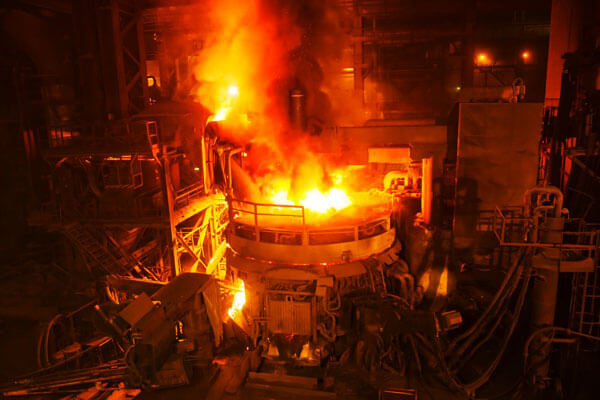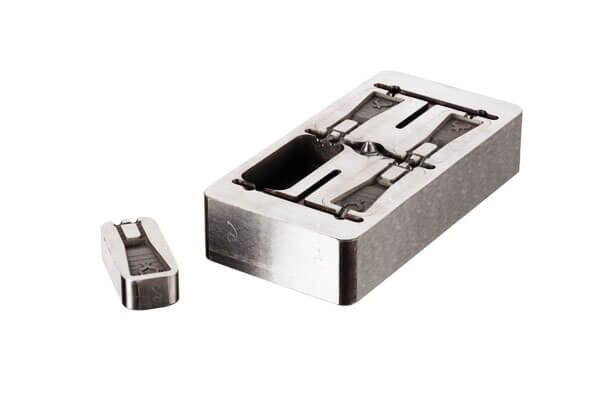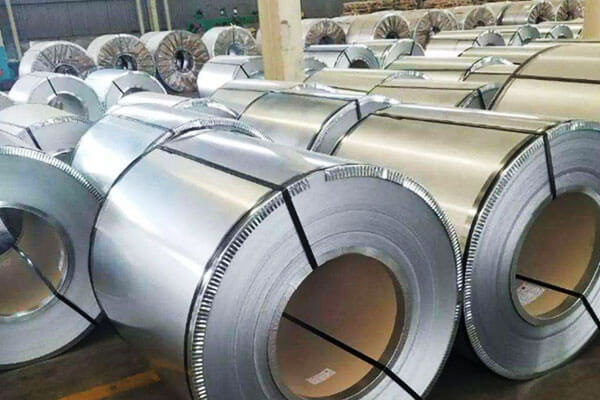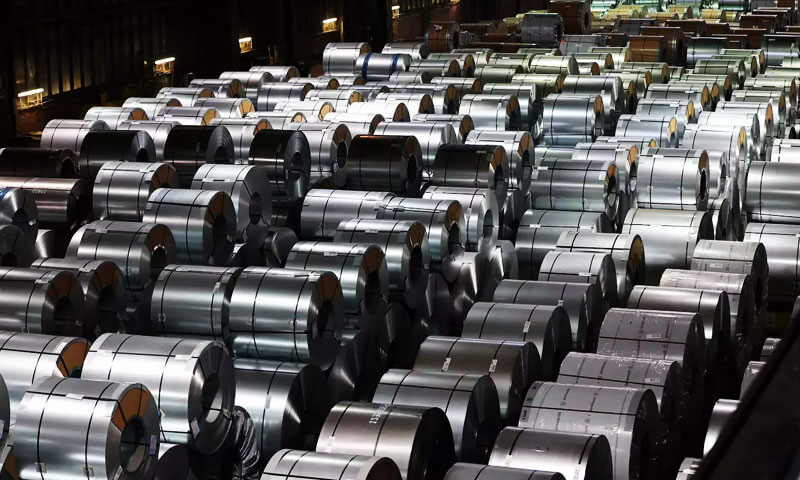Вступ
У 1889, На Паризькій світовій експозиції, Висока сталева конструкція приголомшила світ - Ейфелева вежа.
Складений 18,038 компоненти з кованого заліза, this engineering marvel not only symbolized the pinnacle of structural innovation but also marked humanity’s official entry into the Steel Age.
From the framework of skyscrapers to the intricate components of medical devices, steel has permeated every aspect of modern civilization with its irreplaceable role.
Beyond shaping industrial development, it has been a driving force behind global infrastructure expansion and technological progress.
This article delves into the scientific nature of steel, its manufacturing techniques, industrial evolution, та майбутні тенденції,
revealing how this essential material continues to define the boundaries of human civilization.
1. A Historical Review of Steel
Human exploration of steel dates back to 1800 BCE in Anatolia, but the true industrial revolution began in the 19th century.
У 1856, Henry Bessemer invented the Bessemer converter, which increased steel production efficiency twentyfold,
directly accelerating the rapid development of railways, суднобудування, and mechanical engineering.
By the 20th century, the widespread adoption of continuous casting technology further improved production efficiency, Зменшені матеріальні відходи, and enhanced product quality.
In the 21st century, the global steel industry has undergone significant transformation.
China has emerged as the dominant force, бухгалтерський облік 53.9% of global crude steel production in 2023.
At the same time, tightening environmental regulations and carbon neutrality goals are pushing the industry toward low-carbon and intelligent manufacturing.
A review of steel’s development history shows that each technological breakthrough has dramatically expanded its applications,
allowing steel to penetrate beyond traditional construction into aerospace, медичні прилади, and renewable energy sectors.
2. Steel Manufacturing Processes
Modern steel production is a highly sophisticated industrial system that integrates material science, engineering precision, та екологічна стійкість.
Its core stages include raw material selection, smelting, переробка, і формування, as well as sustainable and circular economy practices.
Raw Materials & Видобуток
The quality of iron ore, coking coal, and alloying elements determines the final properties of steel.
Наприклад, high-purity iron ore with a high Fe content significantly reduces impurities, enhancing mechanical strength and corrosion resistance.
Залежно 2024, global iron ore production has reached 2.2 billion tons, with resource distribution
and extraction costs playing a crucial role in shaping the competitive landscape of the steel industry.
Ironmaking & Steelmaking Processes
Modern steel production primarily relies on вибухові печі (BF), direct reduced iron (Дрі), і basic oxygen furnaces (Бофт).
DRI technology has become an essential method for green steel production, as it reduces carbon emissions by 30% compared to traditional blast furnaces.
Додатково, Електричні дугові печі (Eaf), which utilize recycled scrap steel, мати increased their global production share to 28%,
significantly lowering energy consumption and contributing to a more sustainable production model.

Переробка & Формування
Once molten steel undergoes secondary refining, it is processed through continuous casting and rolling to produce high-precision materials
наприклад ultra-thin stainless steel sheets і aerospace-grade high-strength steel.
Advanced cooling control techniques improve grain structure and fatigue resistance, making steel products more suitable for extreme environments.
Стійкість & Кругова економіка
Steel recycling is a cornerstone of modern industry sustainability.
Every ton of recycled steels prevents the emission of approximately 1.5 tons of CO₂, значно зменшує вуглецевий слід промисловості.
В даний час, з Глобальна швидкість переробки сталі досягла 85%, Підсилюючи перехід до більш зеленого та ефективного виробництва сталі.
3. Classifying Steel: Types and Their Unique Characteristics
Сталь стає одним із найбільш універсальних матеріалів у сучасній інженерії, і його нескінченна пристосованість випливає з точного контролю над його хімічним складом.
Змінюючи вміст вуглецю та додавши різні леговані елементи, Виробники створюють сталі з унікальними властивостями, пристосованими для конкретних додатків.
Вуглецева сталь
Вуглецева сталь служить основою для незліченних застосувань через баланс сили та пластичності.
Його властивості насамперед залежать від вмісту вуглецю, який, як правило, варіюється від 0.05% до 2.0%.

Низьковуглецева сталь (Легка сталь):
- Характеристики: Містить менше ніж 0.3% вуглець, Зробити його дуже кмітливим, Легко формується, і зварювальний.
- Заявки: Широко використовується в автомобільних тілах, структурні промені, and consumer goods where high strength is not the primary concern.
- Точка даних: Low-carbon steel often exhibits a yield strength of around 250–350 MPa,
making it ideal for applications where moderate strength and excellent formability are required.
Середня вуглецева сталь:
- Характеристики: With carbon content between 0.3% і 0.6%, this steel offers an enhanced strength profile and improved wear resistance, although its ductility decreases.
- Заявки: Often used for automotive components like gears and shafts, as well as in the manufacture of railway tracks.
- Точка даних: Typical tensile strengths range from 400–600 MPa, providing a balance between strength and ductility.
Високовуглецева сталь:
- Характеристики: Contains between 0.6% і 2.0% вуглець, resulting in increased hardness and wear resistance, though it sacrifices ductility.
- Заявки: Ideal for cutting tools, пружини, і високоміцні дроти, where durability under stress is critical.
- Точка даних: Стали з високим вмістом вуглецю можуть досягти сильних пристроїв 800 MPA після відповідної термічної обробки, що робить їх ідеальними для важких програм.
Лепка сталь
Лепка сталь Посилює основні властивості вуглецевої сталі, додавши такі елементи, як марганець, хром, нікель, і молібден.
Ця налаштування дозволяє здійснювати індивідуальні атрибути продуктивності, такі як вдосконалена міцність, Теплостійкість, і корозійна стійкість.

Низьколелойська сталь:
- Характеристики: Зазвичай включає невеликі відсотки (до 5%) проплавки елементів, що підвищують силу без значної втрати пластичності.
- Заявки: Використовується в структурних додатках, трубопроводи, і автомобільні частини, де необхідні висока міцність та помірна міцність.
Високолелоська сталь:
- Характеристики: Включає більшу частку легованих елементів для забезпечення вищої ефективності,
включаючи підвищену стійкість до зносу та здатність протистояти екстремальній температурі. - Заявки: Поширені в секторах аерокосмічної та електроенергії, Там, де матеріали повинні терпіти суворі середовища.
- Точка даних: Certain high-alloy steels exhibit yield strengths exceeding 600 MPa and are engineered to resist deformation even at temperatures above 600°C.
Нержавіюча сталь
Нержавіюча сталь distinguishes itself by its excellent corrosion resistance, achieved by incorporating at least 10.5% chromium into the alloy.
The chromium forms a passive layer of chromium oxide on the surface, protecting the material from rust and environmental degradation.

Аустенітна нержавіюча сталь:
- Характеристики: Немагнітний, високостійкий до корозії, and noted for its excellent formability and weldability.
- Заявки: Widely used in kitchen appliances, chemical processing equipment, та медичні пристрої.
- Точка даних: Такі оцінки 304 і 316 stainless steel frequently demonstrate a tensile strength in the range of 500–750 MPa,
combined with outstanding corrosion resistance in diverse environments.
Мартенситна нержавіюча сталь:
- Характеристики: Offers higher hardness and strength compared to austenitic types, though it is less corrosion-resistant and more difficult to weld.
- Заявки: Commonly found in cutting tools, хірургічні інструменти, and high-wear environments.
- Точка даних: Typical hardness values can reach up to 600 HRC після термічної обробки, making them suitable for high-performance applications.
Ферритна нержавіюча сталь:
- Характеристики: Magnetic and less ductile than austenitic stainless steel but offers good resistance to stress corrosion cracking.
- Заявки: Utilized in automotive exhaust systems and industrial equipment that requires moderate strength with good corrosion resistance.
Дуплексна нержавіюча сталь:
- Характеристики: Combines the best of austenitic and ferritic stainless steels, offering high strength and improved resistance to corrosion and stress corrosion cracking.
- Заявки: Ideal for chemical processing, офшорні структури, та морські програми.
- Точка даних: Duplex steels often boast yield strengths between 550–750 MPa, significantly outperforming many austenitic steels in terms of strength.
Tool and High-Speed Steels
Інструментальні сталі і високошвидкісні сталі are specialized alloys designed for the manufacture of cutting tools, штамп, і форми.
They require exceptional hardness, Опір зносу, and the ability to retain strength at high temperatures.

Інструментальна сталь:
- Характеристики: Formulated with tungsten, молібден, ванадій, and cobalt, these steels excel in hardness and durability under extreme conditions.
- Заявки: Employed in the production of hand tools, штамп, and other precision tooling required for high-pressure applications.
- Точка даних: Some tool steels achieve hardness levels exceeding 65 HRC, making them capable of enduring prolonged use without significant wear.
Високошвидкісна сталь (HSS):
- Характеристики: Known for its ability to maintain hardness even at high temperatures, HSS is critical for high-speed machining and cutting applications.
- Заявки: Frequently used in drill bits, end mills, and other cutting tools in manufacturing processes.
- Точка даних: Швидкісні сталі зазвичай підтримують робочі температури до 600 ° С, зберігаючи їхні показники різання, тим самим підвищення ефективності виробництва.
4. Unpacking Steel’s Physical and Mechanical Properties
У цьому розділі, Ми розбиваємо основні фізичні та механічні властивості сталі, підкреслюючи, як ці характеристики керують його різноманітними програмами.
Фізичні властивості
Density and Weight
- Сталі може похвалитися щільністю приблизно 7.85 g/cm³, який вражає відмінний баланс між надійністю та керованою.
Ця оптимальна щільність дозволяє інженерам проектувати конструкції, які підтримують великі навантаження, не несучи надмірної ваги. - Наприклад, При побудові мостів або багатоповерхівки, Щільність сталі дозволяє досягти значної вантажопідйомності, зберігаючи конструктивну ефективність.
Melting Point and Thermal Stability
- З точкою плавлення, яка зазвичай становить від 1370 ° С і 1,510 ° C, Сталь з легкістю витримує екстремальні температури.
Ця висока точка плавлення гарантує, що компоненти Steels залишаються стабільними навіть у високогірних середовищах, таких як турбінні двигуни або промислові печі. - Більше, Теплова стійкість сталі має вирішальне значення для таких застосувань, як автомобільні компоненти та електростанції, де послідовна продуктивність під теплом є важливою.
Теплопровідність
- Сталь, як правило, демонструє теплопровідність навколо 50 З/м · k, що дозволяє йому ефективно передавати тепло.
Ця нерухомість робить сталь ідеальним вибором для застосувань, які вимагають ефективного розсіювання тепла, наприклад, теплообмінники та деталі двигуна. - На додаток, Ефективна теплопровідність допомагає мінімізувати гарячі точки під час високошвидкісної обробки та промислової обробки.
Коефіцієнт теплового розширення
- Коефіцієнт теплового розширення сталі сталі, приблизно 11-13 мкм/м · ° C, гарантує, що він підтримує розмірну стабільність при різних температурних умовах.
This stability is particularly important in precision engineering and construction, where even minor distortions can compromise structural integrity.
Магнітні властивості
- Steel’s inherent ferromagnetic properties allow it to be easily magnetized.
This attribute proves invaluable in the design of electric motors, трансформатори, and various electronic components, where controlled magnetic behavior is essential.
Механічні властивості
Наклад і сили врожаю
- Steel stands out for its impressive tensile strength, which can range from 400 MPa to over 800 MPa after advanced heat treatments.
This strength enables steels to support massive loads, making it indispensable in large-scale construction and heavy machinery. - Крім того, the yield strength, Зазвичай між 250 MPA та 350 MPa for common structural steels,
ensures that steel components resist permanent deformation under high stress.
High-strength alloys may even surpass 500 MPA, meeting the rigorous demands of aerospace and automotive applications.
Пластичність і міцність
- Steel’s ability to deform under tensile stress without fracturing – known as ductility – proves vital in absorbing energy during impacts.
Наприклад, advanced high-strength steels in automotive frames can absorb impact energies up to 120 kJ/cm³, thereby enhancing passenger safety. - На додаток, toughness—the capacity to withstand shock and vibration—ensures that steels can endure repetitive stress cycles,
which is critical for applications in bridges, залізнична дорога, і техніка.
Втома
- The cyclic loading that many structures endure requires materials that can resist fatigue over time.
Steel’s excellent fatigue resistance guarantees that components such as beams and vehicle frames remain reliable even under constant load fluctuations,
Таким чином, продовження життя критичної інфраструктури.
Твердість і знос
- Твердість сталі може бути значно підвищена за допомогою процесів сплаву та термічної обробки, що призводить до покращеної стійкості до зносу.
Ця властивість має вирішальне значення для таких додатків, шестерні, і підшипники, Там, де тривалий вплив тертя та стресу вимагає матеріалу, який з часом підтримує його цілісність. - Просунуті методи лікування та лежачі методи дозволяють певним сталем досягти рівня твердості
Це не тільки протистоїть стирання, але й оптимізує продуктивність у високошвидкісних промислових процесах.
Interplay of Properties and Their Impact
Synergistic Strength and Ductility
- Унікальне поєднання високої міцності на розрив та значної пластичності робить сталі як надійними, так і гнучкими.
Ця синергія дозволяє їй підтримувати значні навантаження, поглинаючи поштовхи, що є критично важливим для таких структур, як хмарочоси та мости.
Optimized Through Alloying and Heat Treatments
- Manufacturers continuously refine steel by adjusting carbon content and adding elements such as chromium, нікель, і марганець.
These enhancements lead to ultra-high-strength steels that can exceed 1 GPa in tensile strength while maintaining enough ductility to withstand dynamic stresses. - Крім того, ongoing advancements in heat treatment processes have improved fatigue resistance and overall performance,
ensuring that steels remains at the forefront of engineering materials.
Thermal and Mechanical Synergy
- Steel’s ability to efficiently transfer heat complements its mechanical robustness, enabling it to perform reliably under harsh conditions.
This thermal-mechanical interplay proves essential in applications where materials
must endure both high temperatures and significant mechanical stress, such as in aerospace engines and industrial boilers.
5. Processing and Manufacturing of Steel
The continuous advancement of steel processing technology has significantly enhanced the added value of steel products, enabling higher performance, довговічність, та ефективність.
Термічна обробка: Enhancing Strength and Durability
Heat treatment processes play a critical role in modifying the microstructure of steels to optimize their mechanical properties,
наприклад, твердість, міцність, і носійне опір. Common techniques include:
- Відпал – Reduces internal stress, improves machinability, і підвищує пластичність.
- Нормалізація – Refines grain structure and improves mechanical strength.
- Гасіння – Rapid cooling increases hardness and wear resistance.
- Загартовування – Adjusts toughness and reduces brittleness after quenching.
Наприклад, laser quenching technology can increase the surface hardness of gears to HRC60, reducing the wear rate by 70%,
thereby extending service life in high-load applications such as automotive transmissions and industrial machinery.
Холодна обробка: Improving Precision and Surface Quality
Cold processing methods refine the dimensions and surface finish of steel components, offering superior accuracy and enhanced mechanical properties. Key techniques include:
- Холодне кочення – Increases strength and surface finish, commonly used in automotive panels and precision components.
- Cold Drawing – Improves dimensional accuracy and tensile strength, essential for producing fine steel wires and tubing.
- Cold Extrusion – Enhances uniformity and mechanical properties, often used in manufacturing fasteners and structural parts.
З 5-axis CNC machining, the precision of turbine blade manufacturing can be controlled within ± 0,005 мм,
ensuring optimal aerodynamic efficiency in aerospace and power generation industries.
Поверхнева обробка: Enhancing Corrosion Resistance and Aesthetic Appeal
Surface treatments provide protective layers that extend the lifespan of steel products, improve wear resistance, and enhance visual appeal. Advanced surface treatment methods include:

- Гальванування – Zinc coating protects steel from rust and oxidation.
- Хромоване покриття – Increases hardness and provides a sleek, Корозійне стійке покриття.
- Фосфатичний – Forms a protective layer that enhances paint adhesion and corrosion resistance.
Зокрема, nano-galvanizing technology has revolutionized corrosion protection by extending the anti-corrosion cycle to 50 роки while simultaneously reducing zinc consumption by 60%,
making it an environmentally sustainable solution for infrastructure and marine applications.
Welding Technology: Achieving Strong and Reliable Joints
Steel structures often require advanced зварювання techniques to ensure durability and load-bearing capacity.
The choice of welding method depends on factors such as material composition, joint design, та вимоги до застосування. Common welding techniques include:
- Дугове зварювання – Versatile and widely used in structural steel fabrication.
- Лазерне зварювання – Provides high precision with minimal heat distortion, suitable for aerospace and medical components.
- Зварювання електронного променя – Ideal for high-strength joints in vacuum environments, commonly used in aerospace and nuclear industries.
Інновації в automated robotic welding і тертя перемішати зварювання (FSW) have further improved joint integrity and manufacturing efficiency,
making complex assemblies more reliable and cost-effective.
Точне виробництво: Achieving Unprecedented Accuracy
Precision manufacturing is crucial in industries that require high-performance steel components with tight tolerances.
The development of advanced machining technologies has revolutionized the manufacturing of complex steel parts. Key techniques include:
- Обробка ЧПУ Centers – Enable high-speed, high-precision cutting and shaping.
- Дротова електроерозія (Електрична обробка розряду) – Allows for ultra-fine cutting of intricate steels components.
- EDM (Електрична обробка розряду) – Enhances precision in hard-to-machine steel alloys.
These cutting-edge technologies have led to unprecedented improvements in the quality and performance of steels products,
enabling their widespread application in aerospace, Медичні імплантати, and high-performance engineering.
6. Глобальний вплив та застосування сталі
Steel’s influence spans multiple industries, each benefiting from its unique properties:
- Будівництво та інфраструктура: Steel forms the backbone of modern urban landscapes.
Structural steel supports skyscrapers, мости, and railways, while reinforcing bars (арматура) provide essential strength to concrete structures.
Наприклад, the Hong Kong-Zhuhai-Macau Bridge utilized 2 million tons of steel, ensuring a lifespan exceeding 120 years under harsh marine conditions. - Automotive and Aerospace: High-strength steel alloys ensure vehicle safety and fuel efficiency.
В аерокосмічній, steel contributes to lightweight, durable airframes and engine components that withstand extreme temperatures and pressures. - Manufacturing and Industrial Equipment: From machine tools to heavy-duty industrial machinery, steel’s robustness and versatility make it indispensable.
Its use in precision equipment has transformed production efficiency across the globe. - Consumer and Medical Products: Stainless steel’s corrosion resistance and biocompatibility make it ideal for kitchen appliances, Медичні імплантати, та хірургічні інструменти.
Advanced alloys such as 316LVM provide superior performance in demanding healthcare applications.
7. Поточний стан металургійної промисловості: Всебічний аналіз
The steel industry is at a turning point, balancing technological progress with sustainability goals while adapting to shifting economic and geopolitical landscapes.
Огляд глобального ринку: Поштовх до вуглецево-нейтральної сталі
Countries worldwide are investing in environmentally friendly steelmaking processes.
Sweden’s hydrogen metallurgical test furnace is now operational, targeting zero carbon emissions by 2030.
Тим часом, leading producers are implementing low-emission production techniques to meet stringent global regulations.
Управління ланцюгами поставок: Забезпечення стабільності та ефективності
Доступність сировини, logistics, and international trade policies remain critical factors affecting steel production.
Companies are adopting smart supply chain solutions to enhance stability and efficiency.
Наприклад, Anshan Iron and Steel’s smart factory, utilizing full-process AI, has achieved a 99.7% defect detection rate, significantly improving production accuracy and reducing waste.
Технологічні інновації: Еволюція високопродуктивної сталі
Cutting-edge developments are redefining the steel industry:
- Smart factories – AI-driven systems enable real-time monitoring and optimization of production.
- Легкий, високоміцні сталі – Essential for the automotive and aerospace сектори, reducing fuel consumption and improving safety.
- Nanocrystalline steel – While offering strengths above 2 GPA, it is still in early-stage development,
with production costs 40% lower than titanium alloys but facing challenges in large-scale industrial applications.
Стратегії зміни клімату: Зусилля з декарбонізацією в галузі
The steel industry is taking proactive measures to reduce emissions:
- China’s commitment – Plans to lower carbon emission intensity by 18% за 2030 through advanced CCUS and energy-efficient processes.
- Electrification and alternative fuels – The adoption of hydrogen-based steelmaking and expansion of Електрична дугова піч (Eaf) виробництво are key to achieving net-zero emissions.
8. Майбутні тенденції та проблеми в металургійній промисловості
As the steel industry evolves to meet global demand, sustainability goals, and technological advancements, it faces both transformative opportunities and significant challenges.
The sector navigates a landscape shaped by innovation, environmental policies, and shifting economic conditions.
Технологічні інновації: Розумні виробничі та високопродуктивні матеріали
Інтеграція автоматизація, Штучний інтелект (Ai), and smart factories is reshaping steel production.
AI-driven systems optimize production efficiency, зменшити відходи, and enhance quality control.
Підйом nanocrystalline steel, boasting strengths exceeding 2 GPA, is revolutionizing high-performance applications,
potentially rivaling titanium alloys in aerospace and advanced engineering.
Тим часом, breakthroughs in 3D printing of steel allow for complex, lightweight designs with superior mechanical properties.
Ініціативи щодо сталого розвитку: Декарбонізація та зелене виробництво
In response to climate change and carbon reduction targets, the steel industry is actively adopting cleaner production technologies. Key sustainability trends include:
- Hydrogen-based steelmaking – Countries like Sweden are pioneering hydrogen metallurgy, aiming for carbon-neutral steel by 2030.
- Carbon capture, utilization, and storage (CCUS) – China’s steels sector aims to cut carbon intensity by 18% за 2030, leveraging carbon capture and recycling technologies.
- Electric arc furnaces (EAFs) – Growing reliance on EAFs, which recycle scrap steel, reduces energy consumption and emissions compared to traditional blast furnaces.
Змагальний матеріал ландшафт: Завдання альтернатив
Steel faces competition from emerging materials such as композити, алюмінієві сплави, and nanomaterials, особливо в автомобільній та аерокосмічній галузі.
Однак, steel’s cost-effectiveness, довговічність, і можливість вторинної переробки continue to make it the backbone of industrial manufacturing.
Інновації в високоміцна, lightweight steels are further enhancing its adaptability in structural applications.
Глобальна динаміка ринку: Торговельна політика та економічні зрушення
The steel industry is deeply influenced by geopolitical factors, trade regulations, and economic trends:
- Supply chain disruptions – Fluctuating raw material prices and political trade barriers impact global steels production.
- Regional growth – Rapid industrialization in Southeast Asia and Africa is driving increased steel consumption.
- Strategic alliances – Steels producers are forming global partnerships to enhance resource efficiency and market expansion.
9. Висновок
Steel not only transformed the physical landscape—from the Eiffel Tower to modern urban skylines—but also reshaped human progress itself.
As the world transitions toward more sustainable and innovative manufacturing processes,
steel continues to evolve, driven by advancements in technology and a relentless commitment to excellence.
Its journey from ancient iron production to modern smart factories encapsulates the spirit of industrial innovation and human ingenuity.
Якщо ви шукаєте високоякісну сталеву або сталеву продукцію, вибір Ланге є ідеальним рішенням для ваших виробничих потреб.


